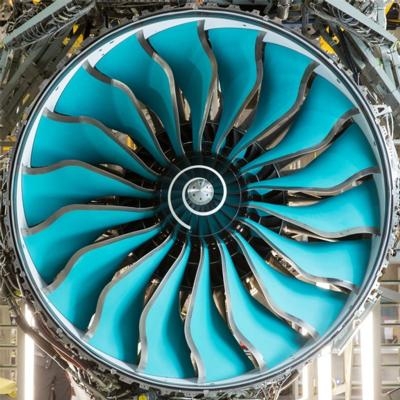Sun, Mar 02, 2014
Looks To Build On The Success Of The Trent Family
Rolls-Royce has shared details of its next generation of engine designs, which could be ready within ten years, featuring technology innovation designed to transform performance. The company has built a technology leadership position with its Trent family of engines, the latest of which, the Trent XWB, the company says is the most efficient engine flying today. Trent engines will continue in service for decades to come with 2,500 in service and more than 2,500 on order.

Rolls-Royce is continually innovating and, as part of that ongoing process, is looking to build on the success of the Trent family of engines with two new generation engine designs.
The first design, Advance, will offer at least 20 per cent better fuel burn and CO2 emissions than the first generation of Trent engine and could be ready from the end of this decade.
The second, UltraFan, a geared design with a variable pitch fan system, is based on technology that could be ready for service from 2025 and will offer at least 25 per cent improvement in fuel burn and emissions against the same baseline.
"These new designs are the result of implementing our ongoing technology programs," said Colin Smith, Rolls-Royce Director - Engineering and Technology. "They are designed to deliver what our airframe and airline customers tell us they need: even better fuel efficiency, reliability and environmental performance."
Both engine designs are the result of the ongoing research and development investment, of approximately £1 billion (approx. $1.67 billion) a year, which Rolls-Royce makes across its aerospace and non-aerospace businesses.
The designs will feature architecture and technology improvements, all currently at an advanced stage of development, that include:
- A new engine core architecture - to deliver maximum fuel burn efficiency and low emissions.
- A CTi Fan System - carbon/titanium fan blades and a composite casing that reduce weight by up to 1,500lb per aircraft, the equivalent of carrying seven more passengers at no cost
- Advanced ceramic matrix composites - heat resistant components that operate more effectively in high turbine temperatures.
- A geared design, called UltraFan, which will deliver efficient power for high-thrust, high-bypass ratio engines of the future.
(Image provided by Rolls-Royce)
More News
Performance-Based Navigation (PBN) [ICAO] Area navigation based on performance requirements for aircraft operating along an ATS route, on an instrument approach procedure or in a d>[...]
The Airplane Came To Rest Underneath A Set Of Damaged Power Distribution Lines On The Floor Of A Coulee On June 19, 2025, at 1412 mountain daylight time, a Cessna 172K airplane, N7>[...]
Aero Linx: FAA Managers Association (FAAMA) Recognized by the FAA, FAAMA is a professional association dedicated to the promotion of excellence in public service. The Association i>[...]
From 2023 (YouTube Edition): Jet Central Micro-Turbine Engines Impress Founded in the late-1990s, Mexico City-based Jet Central produces a unique and fascinating line of micro-turb>[...]
Also: ANOTHER Illegal Drone, KidVenture Educational Activities, Record Launches, TSA v Shoes The Senate confirmed Bryan Bedford to become the next Administrator of the FAA, in a ne>[...]
 ANN's Daily Aero-Term (07.10.25): Performance-Based Navigation (PBN) [ICAO]
ANN's Daily Aero-Term (07.10.25): Performance-Based Navigation (PBN) [ICAO] NTSB Prelim: Cessna 172
NTSB Prelim: Cessna 172 ANN's Daily Aero-Linx (07.10.25)
ANN's Daily Aero-Linx (07.10.25) Classic Aero-TV: The Big Business of Diminutive Powerplants
Classic Aero-TV: The Big Business of Diminutive Powerplants Airborne 07.11.25: New FAA Bos, New NASA Boss (Kinda), WB57s Over TX
Airborne 07.11.25: New FAA Bos, New NASA Boss (Kinda), WB57s Over TX



